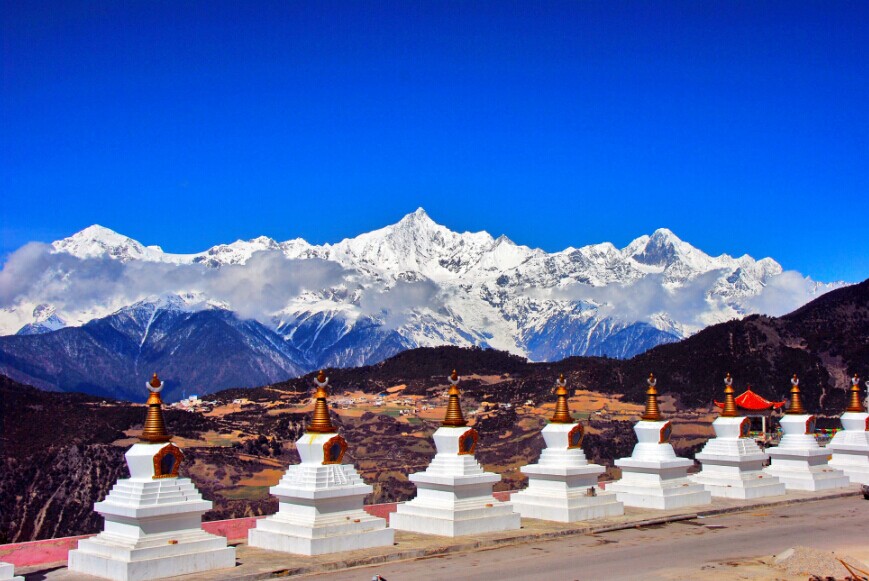
How to Plan Yunnan Photograph Tours
Yunnan Photograph Tours, also Yunnan Photography Tours offer the best Yunnan Photography Tour Packages to capture the gorgeous Yuanyang Hani Rice Terraces, the amazing Dongchuan Red Land, the magnificent Jade Snow Dragon Mountain, the breathtaking Tiger Leaping Gorge, the relaxing Lijiang Ancient Town, etc. Yunnan is blessed with numerous lakes, rivers and mountains. Dongchuan Red Land and Yuanyang Haini Rice Terreaces attract thousands of people at home and abroad to take the best pictures. Puzhehei boundless lotus and picturesque scenery may make you fell like you are dreaming. Dali, Lijiang and Shangri-La are the tourist destinations offering you awesome photography sites to capture the diverse Yunnan. Yunnan Photograph Tours will enable you to appreciate not only the amazing natural wonders and cultural treasures , but also the friendly and welcoming local people, as well as their cultures and traditions. It is truly an unforgettable experience.
Planning a photography tour in Yunnan involves preparing for diverse landscapes, cultural encounters, and unique photographic opportunities. Here’s a guide to help you plan a rewarding photography trip:
1. Choose Your Focus
- Landscape Photography: Yunnan offers stunning landscapes like rice terraces, snow-capped mountains, lakes, and diverse flora.
- Cultural Photography: Capture portraits, festivals, daily life scenes, and traditional architecture of ethnic minority groups.
- Wildlife Photography: Explore Yunnan’s biodiversity, from rare birds to endangered species.
2. Best Time to Visit
- Seasons: Consider the best season for your photography interests:
- Spring (March to May): Flowers bloom, especially cherry blossoms in Honghe and rapeseed flowers in Luoping.
- Summer (June to August): Rice terraces are lush, and the weather is generally pleasant.
- Autumn (September to November): Vibrant colors of fall foliage and clear skies.
- Winter (December to February): Snow-capped mountains and unique winter landscapes in higher altitudes.
3. Planning Your Itinerary
- Locations: Research key photography spots such as:
- Yuanyang: Famous for its rice terraces, especially during sunrise and sunset.
- Lijiang: Old Town architecture, Jade Dragon Snow Mountain, and Tiger Leaping Gorge.
- Shangri-La: Tibetan culture, monasteries, and landscapes like Potatso National Park.
- Dali: Erhai Lake, ancient town scenes, and Three Pagodas.
- Xishuangbanna: Tropical landscapes, ethnic minorities, and wildlife.
4. Equipment
- Camera Gear: Pack a versatile kit including wide-angle and zoom lenses, tripod, filters (ND, polarizer), and extra batteries.
- Storage: Bring sufficient memory cards or portable hard drives for storing high-resolution images.
5. Permits and Permissions
- Permits: Check if specific areas require photography permits, especially in cultural or protected natural sites.
- Respect Local Customs: Ask for permission before photographing individuals, religious sites, or ceremonies.
6. Transportation
- Travel Modes: Depending on your itinerary, arrange for flights, trains, or private transport to reach remote locations.
- Local Transport: Consider renting a car or hiring a local guide/driver familiar with photography spots.
7. Accommodation
- Location: Choose accommodations close to prime photography spots to capture sunrise and sunset without long commutes.
- Comfort: Prioritize comfort and amenities for resting and recharging camera gear.
8. Weather Preparedness
- Climate: Yunnan’s climate varies from subtropical to alpine. Pack layers for changing weather conditions and protect your gear from humidity.
9. Safety and Health
- Altitude: Take precautions if visiting higher-altitude areas like Shangri-La or Yuanyang. Acclimatize gradually and stay hydrated.
- Travel Insurance: Ensure coverage for medical emergencies and equipment protection.
10. Local Guides and Assistance
- Local Knowledge: Engage local guides for insights into hidden gems and cultural nuances.
- Language: Mandarin is widely spoken, but English proficiency varies. Translate key phrases or use translation apps.
11. Editing and Sharing
- Editing: Allocate time for post-processing to enhance your photographs’ impact.
- Sharing: Share your experiences responsibly, respecting local sensitivities and privacy.
12. Environmental Responsibility
- Leave No Trace: Minimize environmental impact by staying on designated paths and respecting wildlife habitats.
Planning a photography tour in Yunnan allows you to capture its diverse beauty and cultural richness. With thorough preparation and a flexible mindset, you can create memorable images that reflect the region’s unique charm and landscapes.
The Most Popular Yunnan Photograph Tours
Yuanyang Hani Rice Terraces Photograph Tours
- 6 Days Kunming-Jianshui-Yuanyang Hani Rice Terraces Group Tour
- 6 Days Kunming Jianshui Yuanyang Hani Rice Terraces Photography Tour
- 6 Days Kunming Jianshui Yuanyang Hani Rice Terraces Photography Tour
- 7 Days Yunnan Muslim Culture Tour with Shadian Mosque and Yuanyang Rice Terraces
- 8 Days Yunnan Photography Tour to Kunming-Dongchuan-Shilin-Jianshui and Yuanyang Hani Rice Terraces
- 8 Days Deluxe Kunming, Shilin, Mile Jianshui Photo Tour with Yuanyang Rice Terraces and Fuxianhu Lake
- 11 Days Yunnan Photograph Tour with Luoping Rapeseed Flowers Festival and Honghe Hani Rice Terraces Field
- 11 Days Yunnan Classic Tour with Jianshui Old Town and Yuanyang Hani Rice Terraces
- 11 Days Yunnan Spring Photograph Tour
Dongchuan Red Land Photograph Tours
- 1 Day Kunming Dongchuan Red Land Tour
- 2 Days Kunming Dongchuan Red Land and Jiaozi Snow Mountain Tour
- 2 Days Dongchuan Red Land Photography Tour
- 5 Days Kunming and Dongchuan Red Land Tour
- 10 Days Yunnan Classic Tour with Dongchuan Red Land Photography
Luoping Rapeseed Flowers Photography Tours
- 5 Days Kunming Spring City and Luoping Rapeseed Flowers Photography Tour
- 11 Days Yunnan Spring Photograph Tour With Luoping Rapeseed Flowers
Yunnan Bird-watching Photograph Tours
- 8 Days Yunnan Winter Birding Tour to Dongchuan Red Land, Nianhu Lake and Dashanbao Nature Reserve
- 8 Days Northeast Yunnan Photograph Tour
Yunnan Ethnic Culture Photograph Tours
- 2 Days Lijiang Lugu Lake Tour and Matriarchal Society Discovery
- 6 Days Yunnan Minority Craft Culture Tour
- 8 Days Lijiang Tour and Gemu Mountain Goddess Festival Tour At Lugu Lake
- 10 Days South Yunnan Ethnic Minority and Tropical Rain-forest Photography Tour
- 39 Days Yunnan 25 Ethnic Minorities Discovery and Photography Tour
Yunnan Overland Photograph Tours
- 13 Days West Yunnan Overland Indepth Tour
- 19 Days West Yunnan and Three Parallel Rivers Overland Tour


















